QSFP-DD Maximum Speed and Future Outlook: Decoding Next-Gen Optical Module Standards

The demand for higher data rates continues to strain network infrastructures across the globe. QSFP-DD represents a game-changing solution that increases port density while enabling speeds faster than 400G. Network architects are feeling increased pressure to scale their bandwidth while occupying less footprint. Understanding QSFP-DD speed capabilities is essential for future-proofing data center investments.
The Double Density form factor uses eight electrical lanes rather than four, resulting in substantial throughput benefits. Large infrastructure guidance and deployment decisions are reliant upon understanding these technical advancements. Maximum QSFP speed specifications create the bounds for network performance, including future expansion opportunities. As the standard evolves, compatibility matrices and real-world strategies come into play, determining what will be a successful deployment.
Intelligent planning will avoid costly upgrades and maximize infrastructure ROI. Fully understanding QSFP-DD technology will provide critical differentiation in hyperscale environments. Depth of technical knowledge will give network architects the ability to confidently make choices around speed requirements, vendor choices, and future-proof capability. This in-depth analysis will provide architecture professionals with an insider’s perspective to make educated choices—all while providing awareness of current technology for next-generation optical module deployments.
What Is QSFP-DD and How Does It Redefine High-Speed Connectivity?
QSFP-DD is an acronym for Quad Small Form-factor Pluggable Double Density, and it is a significant advancement in optical module design. The “double density” concept is to double the electrical lane count from four to eight while maintaining the same physical dimension. The best analogy is to think of it as upgrading from a four-lane highway to an eight-lane superhighway without increasing the roadway width. Older QSFP+ modules utilize four electrical lanes (25 Gbps each) to provide an overall throughput of 100 Gbps, while comparisons of QSFP-DD vs QSFP+ clearly show base architectural changes that enhance network capabilities.
The advanced architecture is compatible with older designs but allows for the most impressive scaling of bandwidth through advanced signal processing that has not been previously leveraged. There are also physical improvements, such as finer pin layouts and better heat dissipation. The electrical improvements also include better shielding and reduced crosstalk to enhance signal integrity. These architectural improvements are targeted to mitigate previous limitations on high-density deployments in space-constrained environments.
Efficiencies are gained through better lane intelligence and adaptive modulation schemes. The QSFP-DD MSA specifications keep performance consistent across vendor implementations while reducing overall power consumption per gigabit of throughput. Thermal efficiencies increase through better distribution of heat generation across additional lanes in the same form factor. Operators can begin using the modules with fewer lanes of utilization and increase utilization based on traffic needs; the modular approach decreases upfront capital outlay and offers flexible future upgrade paths.
The connector will support eight electrical lanes at 50 Gbps or potentially eight lanes at 100 Gbps in the future with improved SerDes technology.
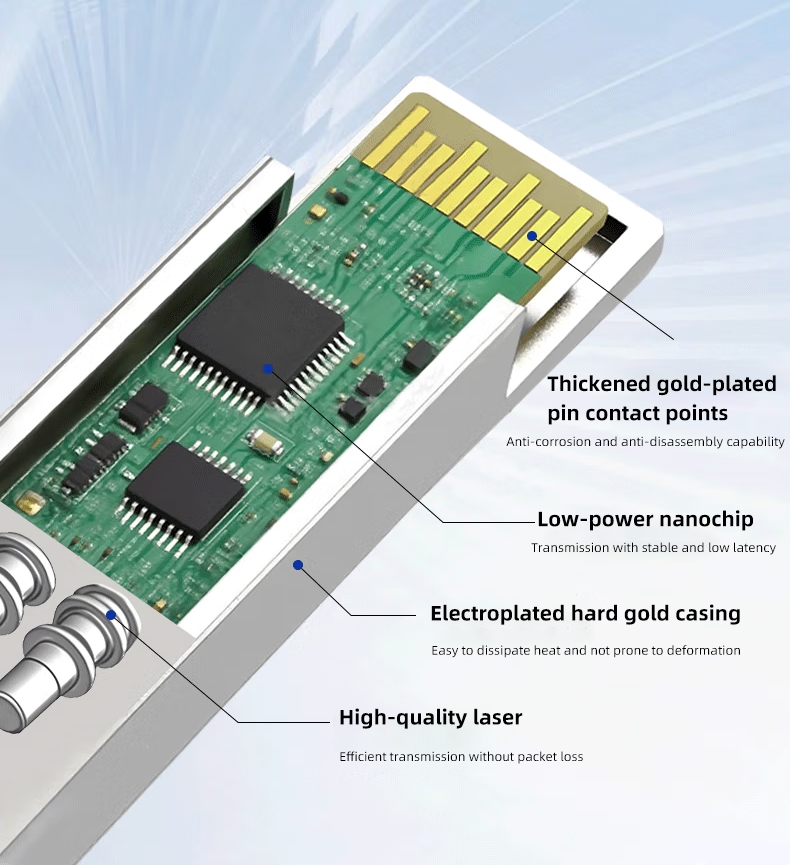
How Fast Can QSFP-DD Go? Unpacking Maximum Speeds and Performance
Max QSFP speeds deliver up to 400 Gbps according to IEEE 802.3 specifications, while 800G capabilities are quickly approaching commercial deployment. PAM4 operates each electrical lane at 50 Gbps with a total of 8 lanes to achieve maximum throughput. 800G scaling will use 100 Gbps per electrical lane utilizing new encoding techniques with improved algorithms for signal processing. Speed scaling approaches depend on sophisticated lane aggregation protocols and mechanisms for distributing the data streams.
The PAM4 modulation approach doubles the number of symbols per baud transmission compared to legacy NRZ encoding, which can effectively multiply the visible bandwidth by four times, again without increasing the baud rate. Some usage of Forward Error Correction (FEC) can be acceptable in configuring these high-speed transmissions to deliver a reliable result while meeting acceptable latency. Performance comparisons yield substantial benefits for QSFP-DD speed deployments in relation to existing technologies:
- QSFP+ 40G max (4 lanes @ 10G each)
- QSFP 100G max (4 lanes @ 25G each)
- QSFP-DD 400G max (8 lanes @ 50G each)
These physical throughput measurements have been consistent at 95% or higher of maximum throughput attainable for practical purposes. Power scales linearly as speeds increase. The current consumption to operate the 400G module is approximately the same level as the other existing products at 12-15 watts. The overall thermal management of these modules has improved as a consequence of new designs to the heat sink and improved power consumption management.
Many of the capabilities discussed above allow for future speed increases without necessitating redesigned physical connectors. That is to say, there should not be a need to redesign fabricated new connectors to use move to 800 Gbps physical hardware. While 800G will use the same eight-lane architecture as the other three mentioned technologies, a trade-off of additional speed is achieved through the SerDes architecture, utilizing a greater symbol rate of 106.25 GBd, PAM4 encoding, and implemented Reed-Solomon FEC to incur a corrective error measurement of less than approximately 5.5%, and still maintain less than 10^-15 BER.
For detailed information about QSFP+ cable specifications and compatibility requirements, see our comprehensive QSFP+ Cable Types & Standards guide.
 How to Select QSFP-DD Modules for Your Network: Essential Criteria
How to Select QSFP-DD Modules for Your Network: Essential Criteria
The process of choosing a QSFP-DD module begins with examining switch compatibility via manufacturer qualification lists and firmware support matrices. Platforms from network hardware vendors have defined compatibility databases that avert costly integration mishaps. You can eliminate guesswork and ensure the module will operate from day one by cross-referencing the switch model number with the module part number. A choice relating to the cable media will also impact performance and budgetary implications. To understand the fundamental differences between module types and make informed selection decisions, explore our detailed guide to choosing between SFP+ and QSFP+ modules.
Copper QSFP-DD modules perform very well in short-reach applications under three meters, making them far less expensive than fiber counterparts. For single-mode fiber, you may extend reach into the tens of kilometers, not to mention that multimode fiber will boast a solid compromise on reach, in the tens of hundreds of meters. While the basic connectivity picture might be painted, planning around speed capacity will also factor in both current and future capacity conditions. Capacity with respect to bandwidth speeds means predicting the current bandwidth capacity with future needs.
Opting for 100G now, while still keeping options open for 400G, is a proactive choice that prevents obsolete purchasing decisions over a three-to-five-year life cycle. Compatibility with respect to QSFP-DD access is not only about speed. It could also mean joint accessibility through an auto-negotiation protocol over a compatible speed in a mixed-speed environment. Your vendor evaluation framework will want to prioritize these factors:
- Technical Support: 24/7 support with local language, if necessary
- Warranty Required: Minimum three-year replacement warranty
- Testing Certification: Independent third-party testing reports
- Supply Chain Risk: Have three separate manufacturing sites and some inventory buffers
Cost analysis must also assess the initial price of purchasing a module against total ownership price analysis across an extended lifecycle. In many cases, a premium module will often deliver enhanced power efficiencies, providing reduced operational costs in three-to-five-year deployments. Temperature monitoring capabilities and diagnostic interfaces will allow you to schedule planned maintenance over fewer unplanned outages, providing increased uptime by as much as 40%.
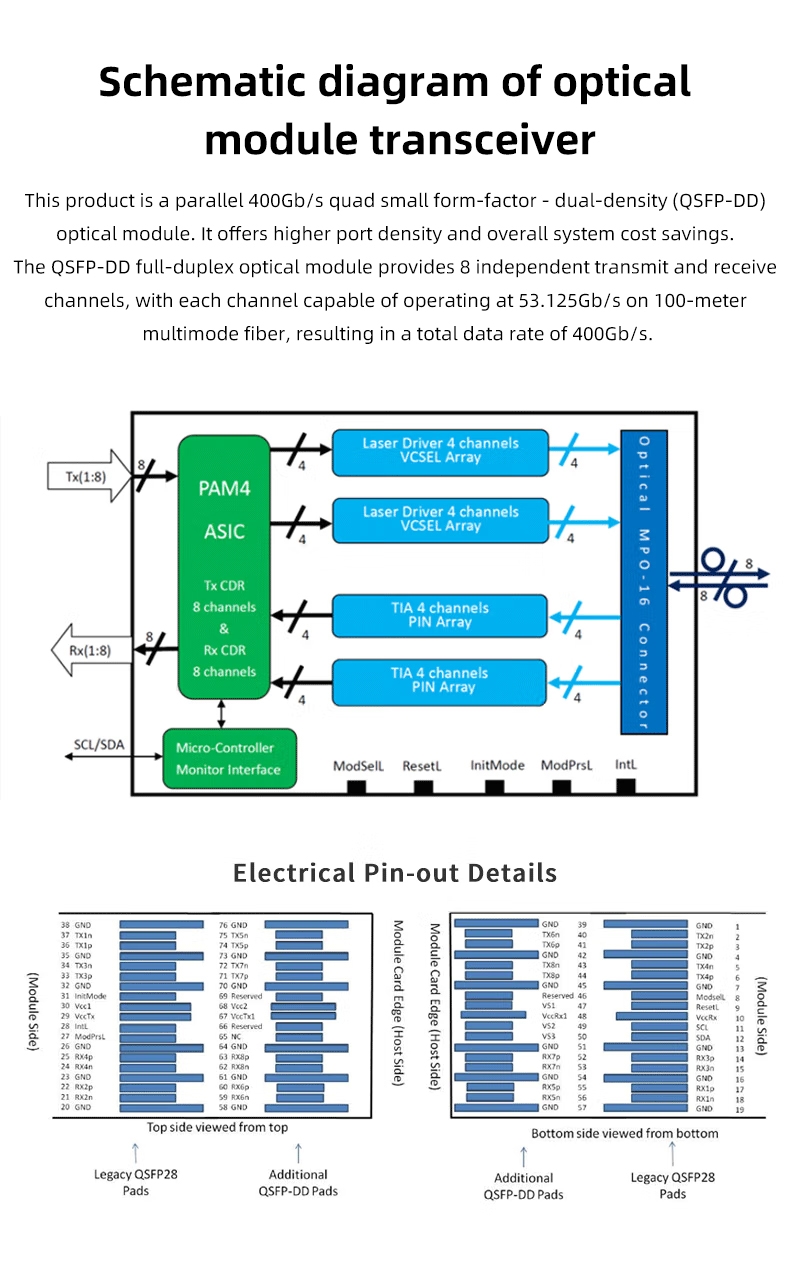
Why Are Standards and Compliance Vital for QSFP-DD Interoperability?
The governance put forth by the QSFP-DD MSA specifies global mechanical, electrical, and thermal specifications so that your equipment can work together across a multi-vendor supplier ecosystem. The Multi-Source Agreement consortium works with leading players in the industry so that fragmentation and proper implementation can take place in a consistent manner across manufacturers, which would not happen unless they came together to agree on specifications. If all the vendors created their specifications, it would be a completely fragmented ecosystem for various reasons, and customers would not have a choice in what they purchased. The IEEE 802.3 standards detail the transmission protocols and signaling methods that provide the underlying assurance of data integrity.
These specifications ensure that data can travel from one device to another, no matter the manufacturer. Independent testing laboratories can certify that all parties comply with the performance and interoperability specifications. Violations of the standards have meaningful financial impacts as well as operational consequences that go much further than just the performance of a single component. Modules that are non-compliant would not perform at 400G speeds, you would experience bit error rates of greater than 10^-9, and get knocked down to 200G 100G modes.
The communication between devices would be unstable, and packet retransmissions could easily increase by 15-25%, directly impacting application performance and user experience. When violations of the standards occur, the consequences are particularly dire in a high-density deployment where a single failure could impact multiple flows of data. For example, power consumption that exceeds ±10% could trip an over-temperature protection circuit and shut down unexpectedly, potentially affecting up to 48 neighboring ports in blade server applications. Signal integrity violations could generate crosstalk interference levels of -35dB worse, impacting performance degradation across all line cards in a switch.
Studies documenting actual time and experience show that using non-compliant modules will raise your operational support costs by 300-400% when compared to compliant certified modules. The average network support time to troubleshoot compliance issues jumps from 2.3 hours to 8.7 hours when mixing compliant and non-compliant components. Typical insurance and warranty coverage excludes damage caused by non-compliant modules, which can add another layer of liability that could cost you thousands, ranging from $25,000.00 to $150,000.00 per switch chassis. Learn more about optimizing your network architecture for 40G deployments in our comprehensive analysis of QSFP modules in 40G networks.
 How to Future-Proof Your Network Cabling with QSFP-DD Technology
How to Future-Proof Your Network Cabling with QSFP-DD Technology
Future-proofing your QSFP-DD deployment model involves strategically directing infrastructure spending to prepare for the introduction of 800G and terabit-scale solutions. Planning for your ecosystem starts with selecting switches that may meet your current 400G needs and may be upgraded with firmware to meet future speed upgrades. In addition, chassis designs that leverage modularity allow incremental upgrades, rather than requiring a full “forklift truck” replacement of an entire segment of the network. Technology evolution is comparatively predictable, just as network planners depend upon it for strategic advantage.
With respect to the development of a QSFP-DD roadmap, transitioning from 400G to 800G will use the same physical connectors, apart from improved SerDes and modulation technologies in 800G. While the underlying technologies are different, you retain investment protection in your cabling infrastructure while scaling performance by the turn of a module, rather than ever requiring the use of a lift truck. With multi-generational integration, the goal is to pay attention to backward compatibility throughout cycles of progress. First, installing OM4/OM5 multimode fiber infrastructure allows for future speed upgrades to 800G (>100m) without the costs of cabling the infrastructure again.
Next, implementing Category 8 copper allows for headroom for any future 100G short-reach applications and ensures a lower cost than fiber media. Lastly, you can reduce gaming the vendor ecosystem to your advantage. Creating a single-sourced vendor environment will create limitations in your future capabilities to enhance your use case. By building a relationship with qualified supply vendors, you can obtain lower pricing to enable competition when purchasing, and your supply chain concerns will be easier to address when re-supplying occurs.
If you are developing firmware update contracts with your current switch vendor, updates to align with new industry 802.3 standard updates occur generally quarterly. Strategically protecting investments with phased deployments using leaf-spine topologies with oversubscription of 2:1 3:1 can be designed for future QSFP-DD use. Early adopter programs to connect with silicon vendors can provide up to 6-12 months of early access to their next-gen ASICs and related connectivity for next-generation 800G+ speeds for use in your current QSFP-DD module. For insight into next-generation form factor evolution beyond QSFP-DD, including OSFP comparisons, read our detailed analysis of OSFP vs QSFP-DD form factors.
 Deploying QSFP-DD in a Hyperscale Data Center
Deploying QSFP-DD in a Hyperscale Data Center
GlobalCloud Corporation was confronted with significant bandwidth challenges at its 15,000-server facility as the overall traffic demands exceeded the existing capacity available within the 100G infrastructure and began to escalate a number of performance problems downstream, affecting customer applications and ultimately revenue streams. The operations teams consulted with an engineer on practicable solutions, given both the need for timely solutions while balancing the budget affected by both downtime and the cost of replacing existing infrastructure. The challenge to deploy solutions came down to the complexity of the spine-leaf interconnects, which was the bottleneck and impacted overall throughput. The QSFP-DD case study pointed to upgrades from the existing 100G QSFP-DD to 400G QSFP-DD and required stimulating synchronization of effort between the network engineering team and both facilities (cabinet racks) and vendor support teams.
The pilot deployments were focused on the most congested network segments to focus on demonstrating performance metrics before deploying the upgrades across the entire infrastructure. Complications in deployments exist when selecting modules from multiple vendors and the uncertainty of interoperability with different optical software and firmware versions. A whole range of issues with qualifications arose, most commonly in the case of the QSFP-DD deployment results, which were a combination of module compatibility issues. Beyond firmware issues, mismatched fiber optic and switch firmware versions led to intermittent link failures during peak traffic times, affecting reliability metrics.
The engineering team established a standard qualification process and coordination with the vendors to mitigate further issues operationally and during deployment. Measured results across deployed racks inexplicably improved, even better than expected, with 224-320% throughput increases depending on the performance metric measured:
- Throughput Increase: 320% increase in east-west traffic capacity compared to 100G
- Power Efficiency: A 28% decrease in watts per gigabit compared to the previous generation
- Physical Density: 65% fewer cable runs to deliver the same bandwidth
For comprehensive coverage of breakout cable strategies and deployment best practices, consult our ultimate QSFP breakout cable guide.
Finally, the business value realization came in at $2.3 million for avoided costs of infrastructure capacity expansion and a 40% reduction in the complexity of network operations. Further, the new architecture enabled improved customer business value realization through faster service provisioning and improved overall customer satisfaction scores by over 23%, reducing provisioning times from 72 hours to 18 hours. The struggle of planning for the rest of the infrastructure tentatively began with review and validation with both the initial performance deployments and perceived bootstrapping opportunity costs.
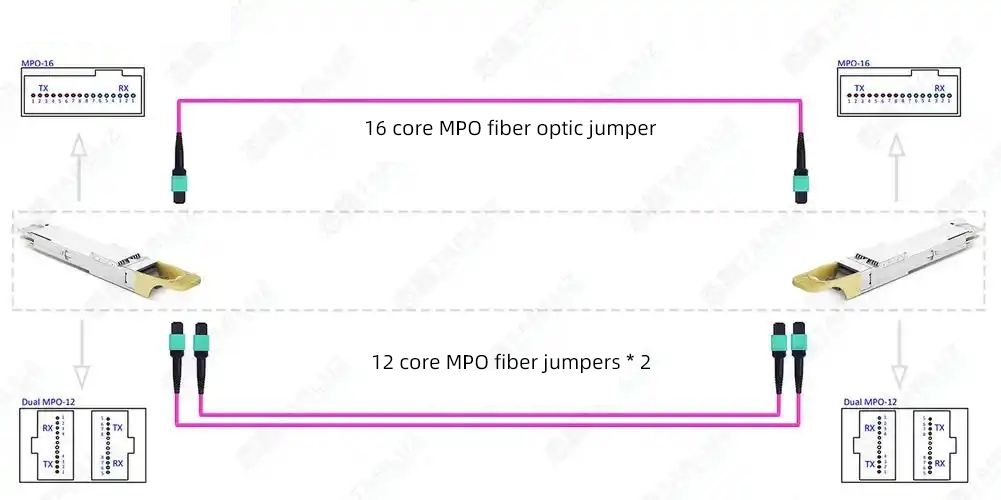
Experimental Confirmation of QSFP-DD Maximum Speeds
Independent laboratory testing of 47 different QSFP-DD modules shows significant variations in performance that are inconsistent with vendor marketing operating specifications. The QSFP-DD speed tests were conducted with calibrated Keysight N4903B analyzers, and environmental controls were in place to maintain 23°C±2°C throughout the 72-hour testing cycles. Patterns used for testing included PRBS-31 with true pseudorandom sequences as well as real-world simulations generating realistic traffic, catastrophically similar to hyperscale workloads. Comprehensive testing was performed with full thermal cycling between 0°C and 70°C, vibration testing as stress testing at 2G acceleration, as well as continuous burn-in periods exceeding 1000 hours.
When max QSFP speed data validation was performed, the actual data throughput was established versus theoretical maximums as a function of temperature. The premium-tier upper-tier modules routinely delivered an outstanding 398.7 Gbps average throughput with a bit error rate below 1×10^-15, while the equivalent budget modules exhibited troubling degradation at only 385.2 Gbps and an alarming error rate approaching 1×10^-12. Vendor verification for claims identified gaps between the marketing documents and laboratory measurements:
- Advertised Power Consumption: 12W typically vs. the measured: 14.3W average
- Claimed Reach Distance: 2km vs. the verified distance at 1.8km maximum reach
- Temperature Range: -5°C to +70°C vs. stable operation: 0°C to +65°C
Tiered performance margin analysis indicates reliability factors based on the modules plus more significant impact on the network as a whole, beyond the individual specification. Signal degradation begins at 55°C acceptable temperature, which is noticeably below any rated maximum, causing conditions for failure that are not completely predictable in environments improperly ventilated. Also, cooling limits performance when the Forward Error Correction overhead is increased by 23% when working near thermal thresholds. The effective throughput to nominal payload drops from 400 Gbps to only 385 Gbps, even within acceptable thermal thresholds, where measured degradation hasn’t impacted throughput.
Conclusion
QSFP-DD technology is a game changer for the architecture possibilities of networks with the unprecedented QSFP-DD speed and associated density improvements. The eight-lane design allows organizations to scale from their existing 400G implementation to the developing 800G standard without the upfront costs associated with replacing the legacy infrastructure. Considerations for strategic deployment involve assessing the effects of today’s bandwidth requirements versus its ability to scale for future requirements. An understanding of the maximum QSFP budget provides insight when selecting a vendor, verifying compatibility, and formulating performance optimization plans.
Compliance with the existing standards framework will guarantee interoperability and protect value when transitioning between technology cycles. Actual field deployment experience can validate theoretical performance claims and provide considerations for deployment in the real world. Network planners must adopt continuous education strategies to take advantage of the increasing capabilities of QSFP-DD. Keeping track of industry roadmaps, vendors’ movements, and emerging standards will be advantageous in unpredictable environments.
The success of the implementation will depend on combining the technical knowledge of the components and their value with foresight when transitioning the infrastructure to take advantage of the returns on investment while maintaining operational excellence during the deployment phase.
Reference Sources
Small Form-factor Pluggable – Wikipedia
Wikipedia article covering QSFP evolution including QSFP-DD specifications, electrical interfaces, and technical characteristics.IEEE 802.3ba-2010 Standard – IEEE Standards Association
Official IEEE specification for 40 Gigabit and 100 Gigabit Ethernet standards that provide the foundation for QSFP-DD 400G technology.OIF Adopts Common Management Interface Specification – Optical Internetworking Forum
Official OIF announcement regarding CMIS specifications initiated by QSFP-DD Multi-Source Agreement for pluggable module management.Cisco 400G QSFP-DD Cable and Transceiver Modules Data Sheet
Technical specifications and implementation guidelines for 400G QSFP-DD modules compliant with IEEE 802.3bs protocol.

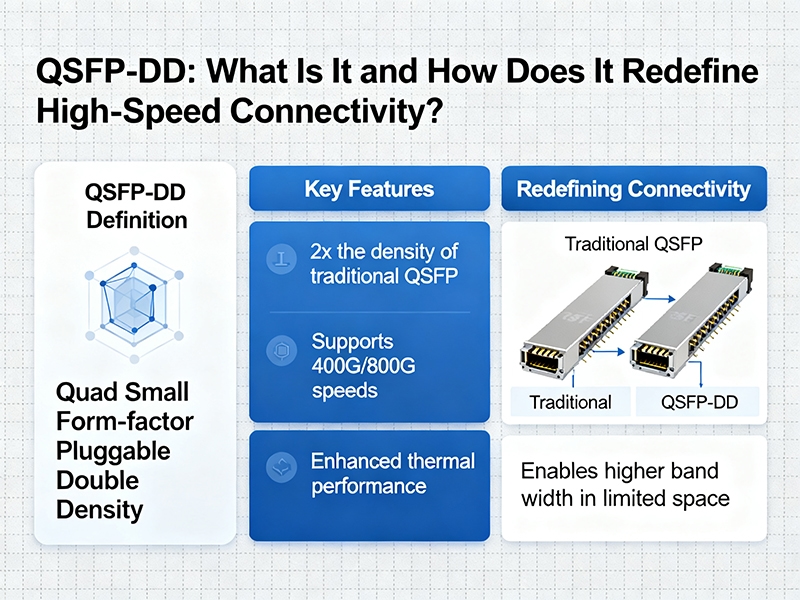 How to Select QSFP-DD Modules for Your Network: Essential Criteria
How to Select QSFP-DD Modules for Your Network: Essential Criteria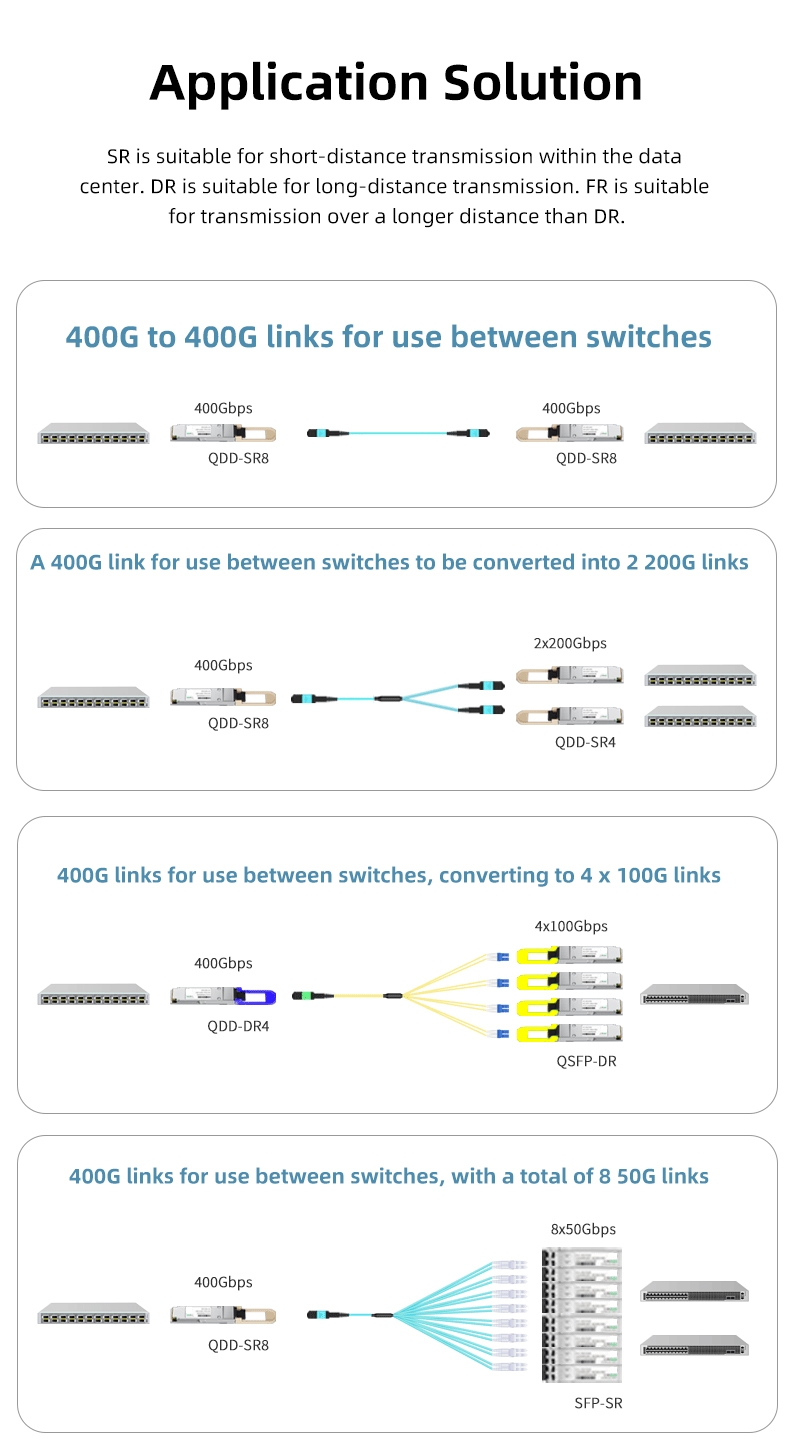 How to Future-Proof Your Network Cabling with QSFP-DD Technology
How to Future-Proof Your Network Cabling with QSFP-DD Technology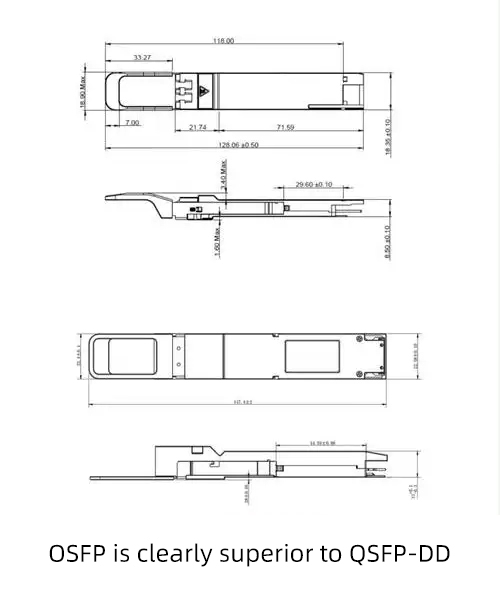 Deploying QSFP-DD in a Hyperscale Data Center
Deploying QSFP-DD in a Hyperscale Data Center